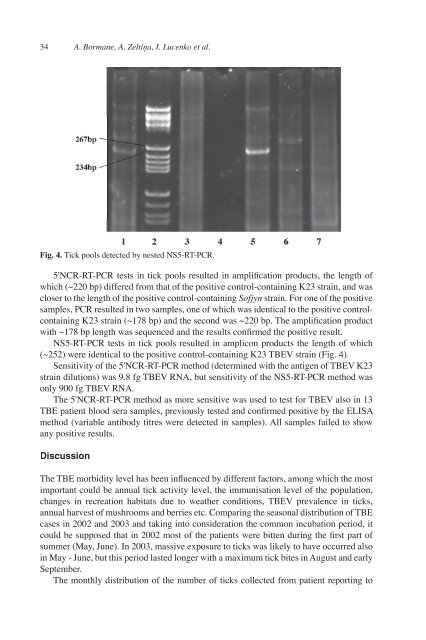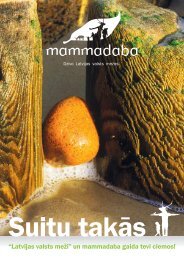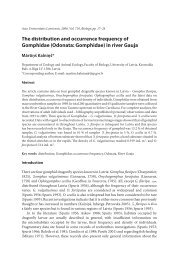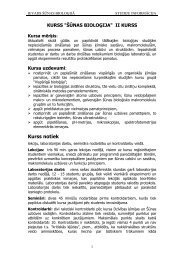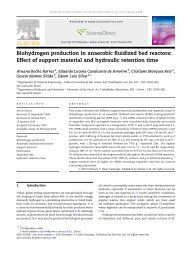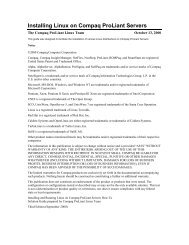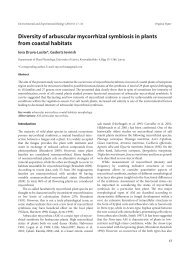Full Text (PDF) - Latvijas UniversitÄte
Full Text (PDF) - Latvijas UniversitÄte
Full Text (PDF) - Latvijas UniversitÄte
Create successful ePaper yourself
Turn your PDF publications into a flip-book with our unique Google optimized e-Paper software.
34 A. Bormane, A. Zeltiņa, I. Lucenko et al.<br />
Fig. 4. Tick pools detected by nested NS5-RT-PCR.<br />
5'NCR-RT-PCR tests in tick pools resulted in amplification products, the length of<br />
which (~220 bp) differed from that of the positive control-containing K23 strain, and was<br />
closer to the length of the positive control-containing Sofjyn strain. For one of the positive<br />
samples, PCR resulted in two samples, one of which was identical to the positive controlcontaining<br />
K23 strain (~178 bp) and the second was ~220 bp. The amplification product<br />
with ~178 bp length was sequenced and the results confirmed the positive result.<br />
NS5-RT-PCR tests in tick pools resulted in amplicon products the length of which<br />
(~252) were identical to the positive control-containing K23 TBEV strain (Fig. 4).<br />
Sensitivity of the 5'NCR-RT-PCR method (determined with the antigen of TBEV K23<br />
strain dilutions) was 9.8 fg TBEV RNA, but sensitivity of the NS5-RT-PCR method was<br />
only 900 fg TBEV RNA.<br />
The 5'NCR-RT-PCR method as more sensitive was used to test for TBEV also in 13<br />
TBE patient blood sera samples, previously tested and confirmed positive by the ELISA<br />
method (variable antibody titres were detected in samples). All samples failed to show<br />
any positive results.<br />
Discussion<br />
The TBE morbidity level has been influenced by different factors, among which the most<br />
important could be annual tick activity level, the immunisation level of the population,<br />
changes in recreation habitats due to weather conditions, TBEV prevalence in ticks,<br />
annual harvest of mushrooms and berries etc. Comparing the seasonal distribution of TBE<br />
cases in 2002 and 2003 and taking into consideration the common incubation period, it<br />
could be supposed that in 2002 most of the patients were bitten during the first part of<br />
summer (May, June). In 2003, massive exposure to ticks was likely to have occurred also<br />
in May - June, but this period lasted longer with a maximum tick bites in August and early<br />
September.<br />
The monthly distribution of the number of ticks collected from patient reporting to


